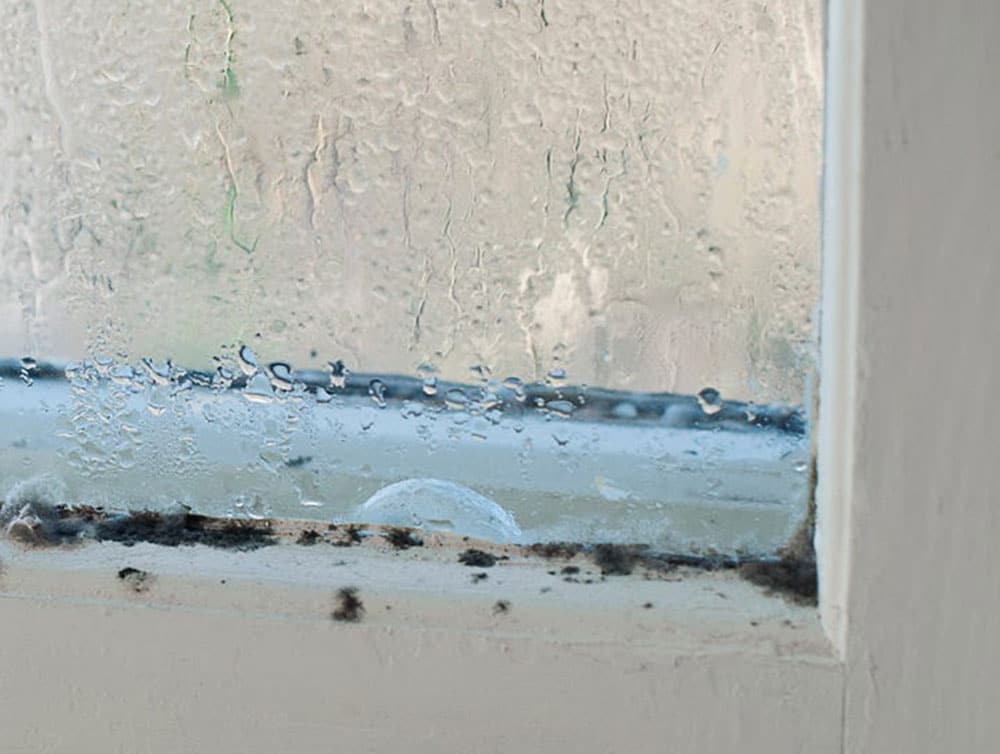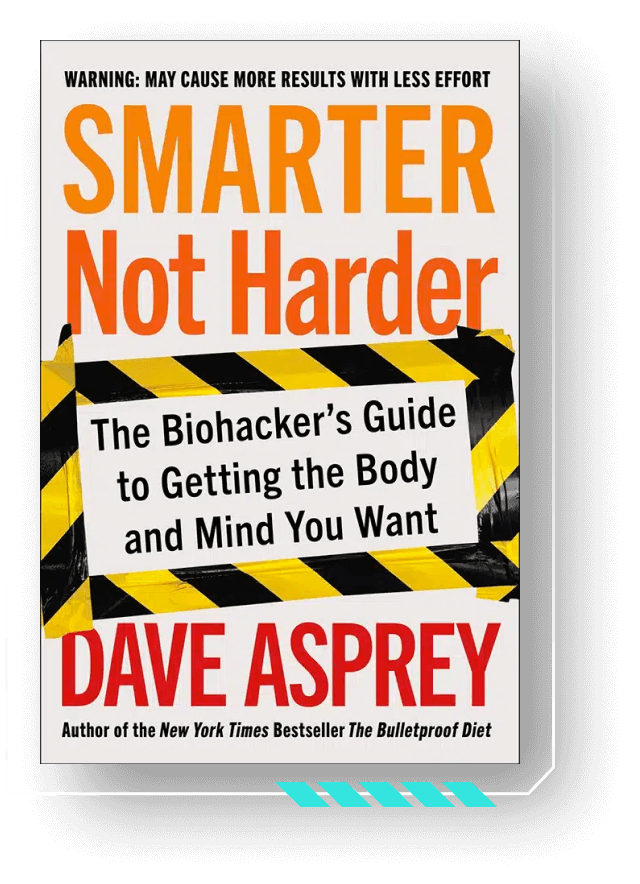
Well, it’s that time of the year again; it’s October, which means it’s Indoor Air Quality Awareness Month. Yes, there is an entire month dedicated to indoor air quality!
And you know what?
I’m not mad about it.
And I’ll tell you why: air quality is paramount to overall health – and most of us don’t pay enough attention to it.
This time of year, we start spending more time indoors, keeping our windows and doors shut, and recycling the stale air circulating in our homes and offices – gross.
So, what better time to address an issue near and dear to my heart?
In this article, we’ll talk about indoor air quality, why it matters for your health and longevity, the dangers of mold, and what you can do about all of it.
Why Is Indoor Air Such a Big Deal?
Each day, the average adult takes about 20,000 breaths[1]. That’s approximately 30 pounds of inhaled air every 24 hours—more than the food we eat and the water we drink combined. Yet, most people, even the most health-conscious of us, think far less about the air they consume than they do about their food and drink. It’s only logical: breathing is something we do mostly unconsciously while eating and drinking require some conscious effort.
But it doesn’t take a genius to realize that ingesting 20,000 daily doses, or 30 pounds, of anything is meaningful, particularly when you think about where we’re doing most of our breathing.
Estimates show that, as modern humans, we spend about 90% of our time indoors[2]. Homes, offices, restaurants—even our vehicles—you name it. All day, we’re rebreathing the same air over and over again.
Moreover, ever since the 1970s, when a global energy crisis incentivized builders and policymakers to prioritize energy efficiency, our indoor spaces are tighter than ever, meaning less outdoor air to replace what’s on the inside[3].
Don’t get me wrong, I’m all for energy efficiency. But in a world of biocides, paints, stains, air conditioning, and indoor plumbing, the insufficient ventilation of our sealed-off spaces is problematic. Pollutants like mold and volatile organic compounds (VOCs) — gaseous chemicals emitted by thousands of common household materials — can quickly build up in these air-tight environments and pose significant risks to our health. Strikingly, some estimates suggest that poor IAQ either causes or aggravates up to 50% of all chronic diseases[4].
Optimizing Your Air and Shelter
As biohackers, we love to optimize. It’s what we do. But there are four foundational elements that need to be rock solid before we can achieve meaningful, long-lasting progress. After all, you can’t build a skyscraper on sand.
What are those foundational elements?
It’s all about air, water, food and shelter. Get those things right, and you can soar. Overlook them, and your other efforts will likely suffer lackluster results.
For this piece, we’re focusing on air and shelter. And specifically, how mold in your living spaces can negatively impact the quality of your air and the safety of your place of shelter. (If you want more on food and water, check out my book, The Bulletproof Diet.)
You might think about mold and poor IAQ like kryptonite. It weakens you. It breaks down your immune system and can lead to fatigue, headaches, dizziness, respiratory distress, and many other ailments[2].
And no matter how hard you try, there’s no way to exercise or meditate yourself out of a mold problem. Nor can you supplement, fast, or nourish your way out of one. Sure, all of these things will help once you’ve identified what’s wrong, but first, you need to determine if mold is growing in your environment, and take the necessary steps to get it corrected.
How Do You Know If You’re Dealing With Mold?
Mold can be subtle, but it often leaves clues.
Here are some signs that mold has crept into your life:
Visual
Signs of moisture in modern buildings are a red flag: water bugs, staining, discoloration, peeling paint, trim pulling away, and of course, actual mold growth on surfaces.
Odors
Mold growth emits a telltale musty scent, which people often dismiss as an aesthetic nuisance. On the contrary, emerging research has linked exposure to this musty odor to various afflictions, including doubled asthma risk in kids and higher incidences of depression across the general population[5][6].
Animal studies have shown that the gasses causing the musty smell, known as microbial volatile organic compounds (mVOCs), can cause mitochondrial damage and lead to neurological disorders[7].
All molds produce these neurotoxic gasses during growth, and they are airborne by their very nature, so this is a hazard no matter what kind of mold is growing [8][9].
Physical Symptoms
Common symptoms include upper respiratory issues, allergic reactions, headaches, dizziness, fatigue, cognitive impairment, emotional dysregulation, the aggravation of other diseases, such as autoimmune issues, and many more [4][10][11].
Mold affects everyone differently, but it seems to follow a similar pattern. Short-term exposure usually leads to short-term symptoms; long-term exposure leads to chronic symptoms that can persist indefinitely. That’s why it’s vital that you learn the signs and listen to your body. That way, you can take immediate action to reduce exposure and hopefully prevent a short-term problem from becoming a chronic one.
What Should You Do If You Think You Have Mold?
So, you’ve noticed some signs or symptoms, and you think you have a problem.
- First off, protect yourself. This may mean relocating temporarily, improving ventilation, using HEPA air filters, and potentially seeking medical care. In any case, act quickly.
- Next, diagnose the source of the moisture so you can fix it first, and do some testing to determine the extent of the mold. This often requires hiring an inspector. Unfortunately, professional mold testing is expensive, and it’s hard to know who to trust. That’s why I partnered with GOT MOLD?
They make a very high-quality, affordable air testing kit for mold. It uses the same method as professionals but without any of the cost or hassle of trying to find and hire a qualified inspector. With their kit, you can test the air in up to three rooms, which is hugely beneficial for pinpointing the source of a problem (particularly compared to dust tests that merely take one composite sample). Analysis is then performed by Eurofins, the world’s top environmental microbiology lab, and turnaround time is fast: only three business days once the samples arrive at the lab.
- Once you’ve identified the source of the moisture problem and stopped it, you’ll have to figure out the extent of the mold and begin the cleanup, known as mold remediation. This is something that a professional should always handle. But, as you might imagine, not all remediation contractors are created equal. You need to ensure they adhere closely to the IICRC S520 Mold Remediation Standard, the playbook for all reputable professionals in which chemicals and mold-killing sprays and fogs are strongly discouraged. Mold remediation is about fixing the water problem, removing the materials that can’t be cleaned (drywall, carpet, carpet padding, etc.), and scrubbing the air and surfaces to restore the property to a “normal” condition.
- Then, once the cleanup is done, independent, professional testing is highly recommended before you release the final funds to the contractor.
How Do I Get Ahead of a Mold Problem?
Knowing the appropriate steps to take if you find yourself with a mold problem is crucial, but the best approach is avoiding mold issues altogether – so how do you get ahead of it?
Here are a few things to consider for avoiding mold-related illness.
- Regular Inspection: Periodically inspect your home or workplace for signs of mold growth and excess moisture, paying special attention to damp or poorly ventilated areas.
- Proper Ventilation: Ensure good ventilation throughout the building, particularly in bathrooms, kitchens, and basements. Use exhaust fans to reduce moisture and minimize mold growth. Ensure these fans terminate outside, and don’t just redirect the air into a wall, ceiling, or attic.
- Control Humidity: Use digital humidity gauges to monitor indoor humidity, keeping levels between 40-60%, with an ideal target of 45% to discourage condensation and mold proliferation. Use a dehumidifier to control the atmosphere in areas prone to excess moisture.
- Prompt Repairs: Address leaks and water intrusion quickly, as excess moisture provides an ideal breeding ground for mold. Mold growth can occur in as little as 24-48 hours of a moisture problem.
- Regular Cleaning: Regularly clean areas susceptible to mold, such as bathrooms, kitchens, and basements. And don’t worry about killing mold or antimicrobial coatings. Simply keeping things clean and dry is the ultimate mold prevention technique.
- Mycotoxin Awareness: Be mindful of mycotoxin contamination in food, particularly in grains, nuts, and coffee. Store food properly to prevent mold growth. Again, there is much more about this in the Bulletproof Diet.
- Proactive Testing: Professional mold testing can be cost-prohibitive and leave you feeling a bit vulnerable. In contrast, using the GOT MOLD? Test Kit, you can safely and easily test your air 4x a year for the price of just one professional inspection. The faster you get to a mold problem, the less exposure you will have and the less expensive it will be to repair.
Takeaway
As we commemorate Indoor Air Quality Awareness Month this October and reflect on the often-unseen threats that lurk within our indoor environments, let’s make a promise to remain vigilant year-round. Mold, with its potential to affect our physical and mental health, underscores the necessity of proactive measures for maintaining clean indoor air. By staying informed and taking action to mitigate mold exposure, we can create healthier living and working spaces for ourselves and our loved ones.
References
- https://www.lung.ca/lung-health/lung-info/breathing
- https://www.epa.gov/report-environment/indoor-air-quality#health
- https://www.jchs.harvard.edu/blog/climate-change-and-indoor-air-quality-lessons-from-the-energy-crisis-of-the-1970s
- Hope, Janette. “A review of the mechanism of injury and treatment approaches for illness resulting from exposure to water-damaged buildings, mold, and mycotoxins.” The Scientific World Journal 2013 (2013).
- https://news.brown.edu/articles/2007/08/depression-and-household-mold
- https://www.newswise.com/articles/mold-in-homes-doubles-risk-of-asthma
- Ogbodo, John Onyebuchi, et al. “Volatile organic compounds: A proinflammatory activator in autoimmune diseases.” Frontiers in Immunology 13 (2022): 928379.
- https://www.epa.gov/mold/what-does-mold-smell
- Bennett, Joan W., and Arati A. Inamdar. “Are some fungal volatile organic compounds (VOCs) mycotoxins?.” Toxins 7.9 (2015): 3785-3804.
- Kraft, Stephanie, Lisa Buchenauer, and Tobias Polte. “Mold, Mycotoxins and a Dysregulated Immune System: A combination of concern?.” International journal of molecular sciences 22.22 (2021): 12269.
- Harding, Cheryl F., et al. “Mold inhalation causes innate immune activation, neural, cognitive and emotional dysfunction.” Brain, behavior, and immunity 87 (2020): 218-228.














